Múlaþing:The magic of Austurland’s Múlaþing
Transport links
We’re happy to report that the Múlaþing area is easy to reach.
By road
- Egilsstaðir is the largest town in Austurland and it sits on Iceland’s main highway (Route 1, also known as the Ring Road).
- There are good road connections with Reykjavík: you can drive the Ring Road across the north of the country, or the south, and be assured of a stunning road trip no matter what route you choose. Reykjavík to Egilsstaðir along the northern route is approximately 640km (400 miles), or 700km (435 miles) along the southern route.
- We always recommend checking road conditions on the website is. This is especially important in the winter months when you can get real-time information on whether roads are easily passable, slippery, difficult, or closed. The definitions are explained when you click on the i at the bottom of the screen.
By air
- Egilsstaðir is home to an airport with connections a few times daily to Reykjavík. It’s a flight of around one hour, and the views out the window are spectacular in clear weather.
- Alternatively, you can fly to Akureyri airport in North Iceland (with plenty of domestic flights to Reykjavík plus a handful of international air connections) and then drive a super-scenic 3.5 hours to reach Egilsstaðir (with some worthy detours to North and East Iceland gems, including Stuðlagil canyon).
By sea
- Seyðisfjörður is the home of Iceland’s only ferry connection with the rest of Europe. The weekly Norröna ferry is Iceland’s sea link to Denmark and the Faroe Islands. However, it’s useful to know that the ferry sailings are paused between late November and mid-March
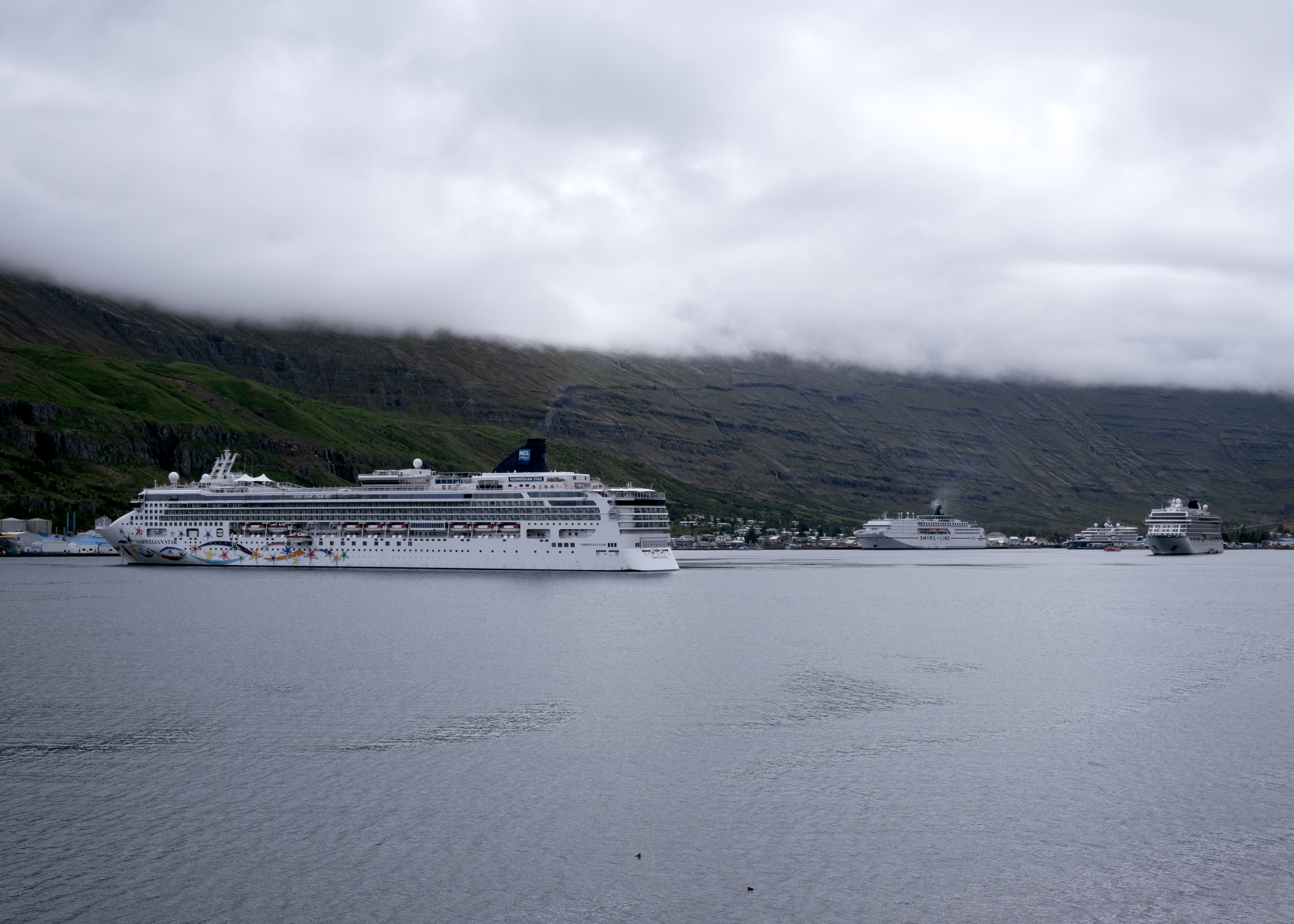
Cruise ships in Seyðisfjörður. Photo: Ingvi Örn Þorsteinsson
Múlaþing’s cool coastal communities
Seyðisfjörður
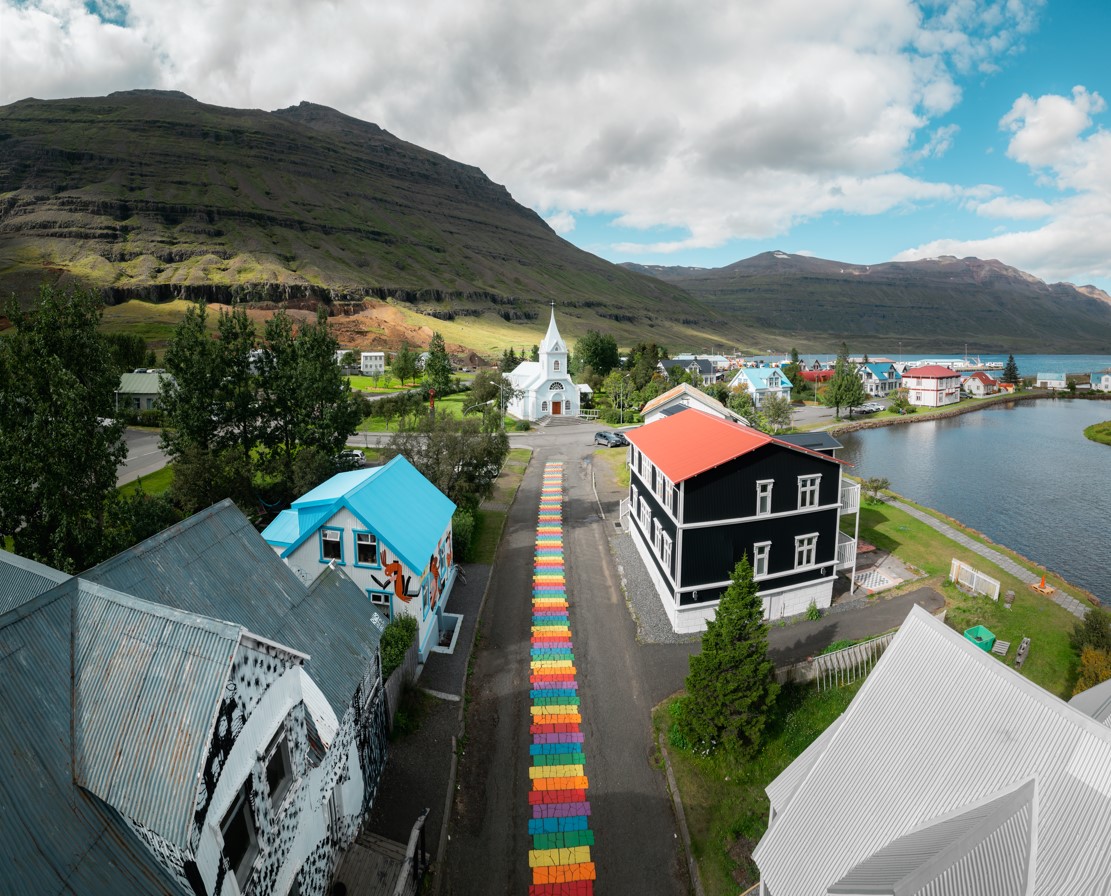
The Rainbow street in Seyðisfjörður. Photo: Þráinn Kolbeinsson
Color and creativity abound in Seyðisfjörður, a village filled with bright cottages and artist studios. Recently it’s become famous for its photogenic Rainbow Street, which ends out in front of the pretty blue town church. It’s not hard to see the reasons behind the town’s popularity with visitors, as nature combines with local life to make visitors reach for their hiking boots and cameras. The town community numbers only around 700 but impressively manages a thriving arts scene that includes summer and winter art-themed festivals, artist residencies, and even art installations high in the hills.
Local checklist
- Walk among the waterfalls of Vestdalur Nature Reserve, up to the Vestdalur lake.
- Taste everything from super-fresh sushi to creative pizzas and burgers, plus a local beer named after a wartime fjord shipwreck, El Grillo.
- Get out on the water in a kayak or on a local fishing boat for sea-angling and sightseeing.
- Test your singing voice and echoes at Tvísöngur, a mountainside sound sculpture with a view.
- Earn the title of ‘Seyðisfjörður Mountain Viking’ by climbing seven notable peaks surrounding the fjord.
Borgarfjörður eystri
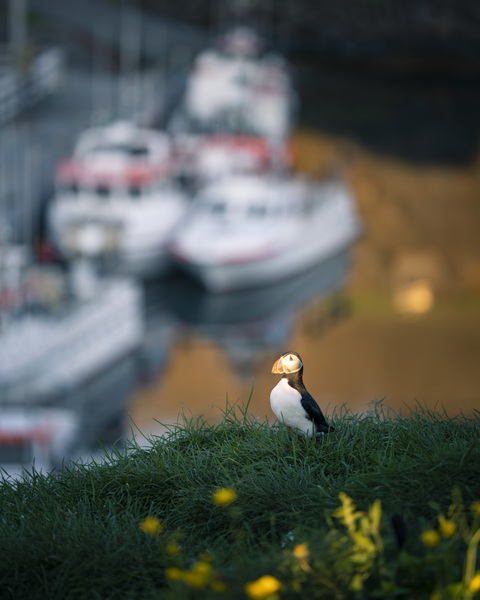
The puffin in Borgarfjörður. Photo: Þráinn Kolbeinsson
Borgarfjörður eystri is home to summertime puffins, the queen of the Icelandic elves, an eye-catching grass-roofed house, and a beloved music festival. Not to mention a creative and close-knit community of around 100 locals who keep busy with farming, fishing, fish processing, and more. You can taste some of their tasty catch, plus farm-to-table lamb, in the local restaurants. Our tip: Ask a local about their favorite hiking trail in the surrounding mountains. They’re spoiled for choice!
Local checklist
- Travel around the bay to reach Hafnarhólmi and its picturesque puffin colony.
- Pull on your boots for the hike to the giant boulders and grassy meadows of Stórurð.
- Taste local fish in one of the town cafes. Fish soup is a Borgarfjörður favorite!
- Soak at the local spa, where outdoor hot tubs have fine mountain views.
- Check out the local brewery, making all kinds of interesting concoctions.
- Explore secret hiking and biking trails around the fjord.

Borgarfjörður. Photo: Þorsteinn Roy
Djúpivogur
The town of Djúpivogur has discovered the joys of slowing down and taking time to smell the roses. In this scenic southern pocket of Austurland, life moves at a relaxed pace thanks to involvement with Cittaslow, ‘an international network of cities where living is good’. There’s time here for creativity and craft, and for family and community. There’s time to scale mountains (or just admire them), to watch the local birdlife, and to cycle and walk and cruise, then soak in the pools. Locals draw inspiration from nature, and the living is indeed good.
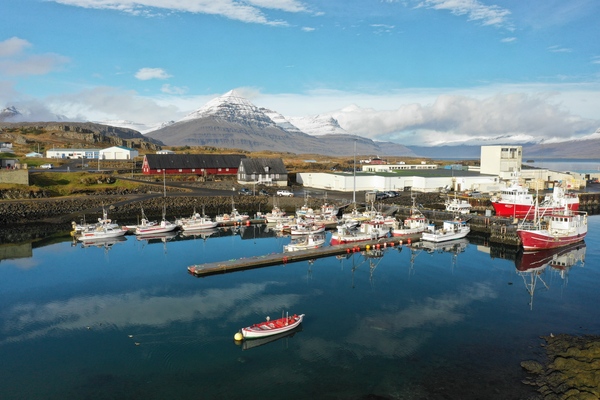
The harbour in Djúpivogur. Photo: Páll Guðmundur
Local checklist
- Admire the outdoor sculpture called Eggin í Gleðivík (‘The Eggs of Merry Bay’), by artist Sigurður Guðmundsson. It features 34 oversized eggs arranged along the waterfront, celebrating the birds of the area.
- Visit the studios and outdoor galleries of local collectors and craftspeople.
- Head north along the scenic Ring Road for Teigarhorn nature reserve and beautiful Berufjörður, or south to the black sands of rugged Stapavík beach.
- Take a walk among the birdlife at Búlandsnes sanctuary – or to really stretch your legs, summit the peak of mystical Búlandstindur.
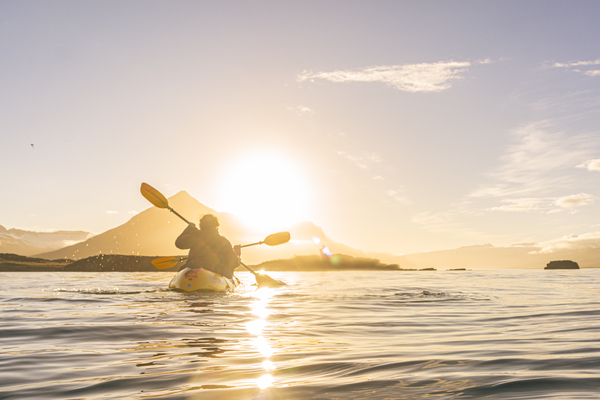 Kayaking near Djúpivogur. Photo: Maciej Pietrunko / Arctic Fun
Kayaking near Djúpivogur. Photo: Maciej Pietrunko / Arctic Fun
Múlaþing’s inland idylls
Egilsstaðir
The hub of the east, Egilsstaðir is the largest town in the region and it’s home to all the services a traveler might need. It’s a great hub for exploration – on its doorstep is Lagarfljót, a lake that may or may not be home to a monster, plus scenic hiking trails and roads to deliver you to neighboring fjords, forests, highland farms, waterfalls and wide open spaces. Just outside town is Vök Baths, a stellar bathing spot making use of local geothermal waters.
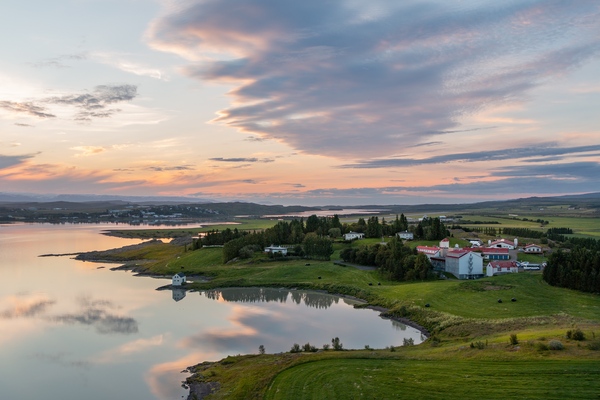 Egilsstaðir. Photo: Páll Guðmundur Ásgeirsson
Egilsstaðir. Photo: Páll Guðmundur Ásgeirsson
Local checklist
- Get a taste of Austurland in the high-quality restaurants: sample everything from beer flavored with locally grown wasabi, to creative ways with fish and lamb.
- Say hi to orphaned reindeer being raised at Reindeer Park, in a woodland idyll outside Egilsstaðir.
- Soak with locals at the town’s outdoor swimming pool, or find your bliss at Vök Baths, where cool design meets warm natural inspiration.
- Take a walk to pretty Fardagafoss waterfall at the foot of Fjarðaheiði heath.
- Visit the East Iceland Heritage Museum for insight into Austurland life, with a focus on rural history and the introduction of reindeer to the region.
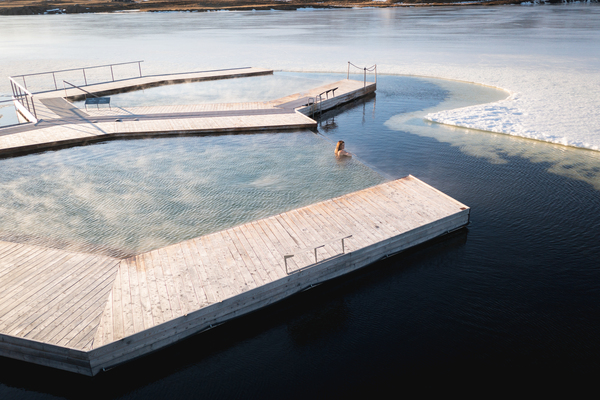
Vök Baths. Photo:Gunnar Freyr Gunnarsson
Wildlife to look out for
In addition to the welcoming locals, there’s an assortment of furry and feathered creatures that make a visit extra-special.
Did you know that reindeer roam wild only in East Iceland, and nowhere else in the country? They generally stay at high elevations during the summer months: their favorite areas are around Snæfell mountain and the remote heathland north of Vatnajökull glacier. In the wintertime, they come down from the highlands and graze close to the coastal grasslands, making it easier to spot them.

Reindeers in the east. Photo: Þráinn Kolbeinsson
Birds are another first-class drawcard, but primarily in spring and summer. Puffins are among the biggest crowd-pleasers in Iceland, and one of the country’s best places to see puffins is Borgarfjörður eystri. Djúpivogur is also renowned for its rich birdlife, which is drawn to the area’s shallow lagoons, coastal lakes, and mudflats.
Winter activities to enjoy
Winter in Austurland is pretty wonderful.
As Iceland’s days grow shorter and the temperatures drop, we invite you to join us to experience the best of Austurland. Our wintry wonderland combines snowy peaks, cozy cafes, fantastic fjords, and fine local flavors. There’s the added bonus of clear skies for nightly aurora gazing, and hot pools for warm soaks with snow-capped views.
Rug up and get ready! We look forward to giving you a warm welcome

